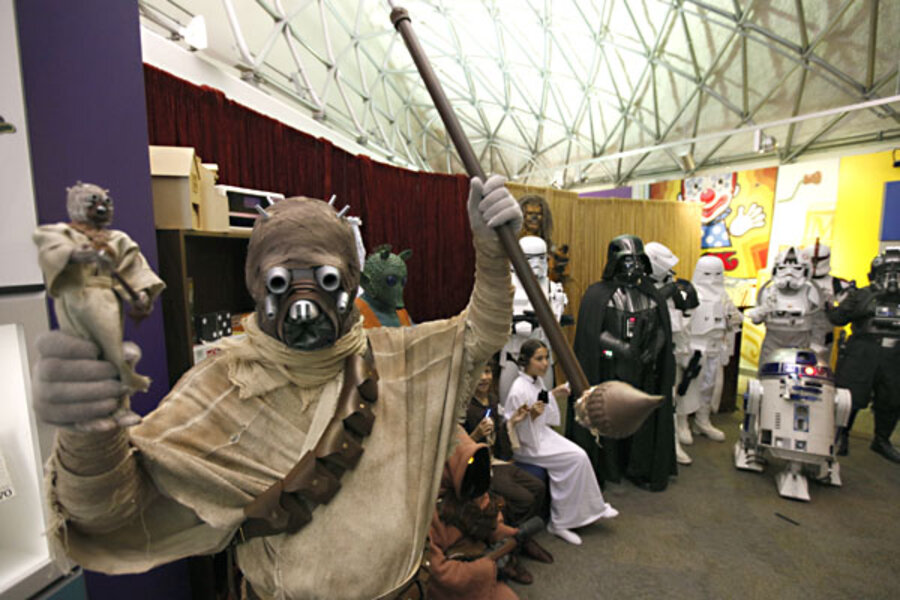Toy Hall of Fame inducts Dominoes, Star Wars
Loading...
| Rochester, N.Y.
Luke Skywalker and Princess Leia outmuscled little green army men for a spot in the National Toy Hall of Fame. "Star Wars" action figures join centuries-old dominoes in the class of 2012, which was announced by the Rochester hall Thursday.
A national selection committee chose them from among 12 finalists, plucking the most ancient and most modern toys from the list.
"Star Wars" action figures went on the market in 1978, following the 1977 release of the 20th Century Fox movie. The 3 3/4-inch figures of Han Solo, Chewbacca, R2-D2 and company were sold until 1985 and again from the mid-1990s to today.
Museum officials say their phenomenal popularity inspired other toy makers to tie their products to movies and television series and they note the toys' appeal extends to adults who continue to collect them.
"They are a force to be reckoned with," said Patricia Hogan, curator at The Strong museum, which houses the Toy Hall of Fame.
More than 20 lines of "Star Wars" figures have launched, propelling the film series' merchandise sales to $20 billion over the past 35 years. The action figures were first made by Kenner, which was bought by Tonka and later Hasbro.
Dominoes originated in China in the 1300s and appeared later in Europe in a slightly different form. A standard set of 28 tiles represents all possible results when rolling a pair of six-sided dice, with the addition of two blank sides. Although there's a variety of ways to play with them, the cascading toppling of lined-up tiles put the "domino effect" into the American lexicon.
The toys beat out plastic green army men, the board game Clue, the Fisher-Price Corn Popper, Lite-Brite, the Magic 8 Ball, the pogo stick, sidewalk chalk, the electronic game Simon, the tea set and Twister.
Officials at the Toy Hall of Fame say anyone can nominate a toy and thousands of suggestions come in every year. An internal committee of curators, educators and historians chooses the finalists and then a national selection committee votes for the winners.
To date, 49 toys have made the cut. They range from classics, like Play-Doh and Slinky, to the less obvious, like the stick and cardboard box.
Longevity is a key criterion for getting into the 14-year-old hall. Each toy must be widely recognized, foster learning, creativity or discovery through play, and endure in popularity over generations.
"Play is an essential activity, critical to learning and to human development," said Christopher Bensch, The Strong's vice president of collections. "Play is also a window into understanding American culture."





